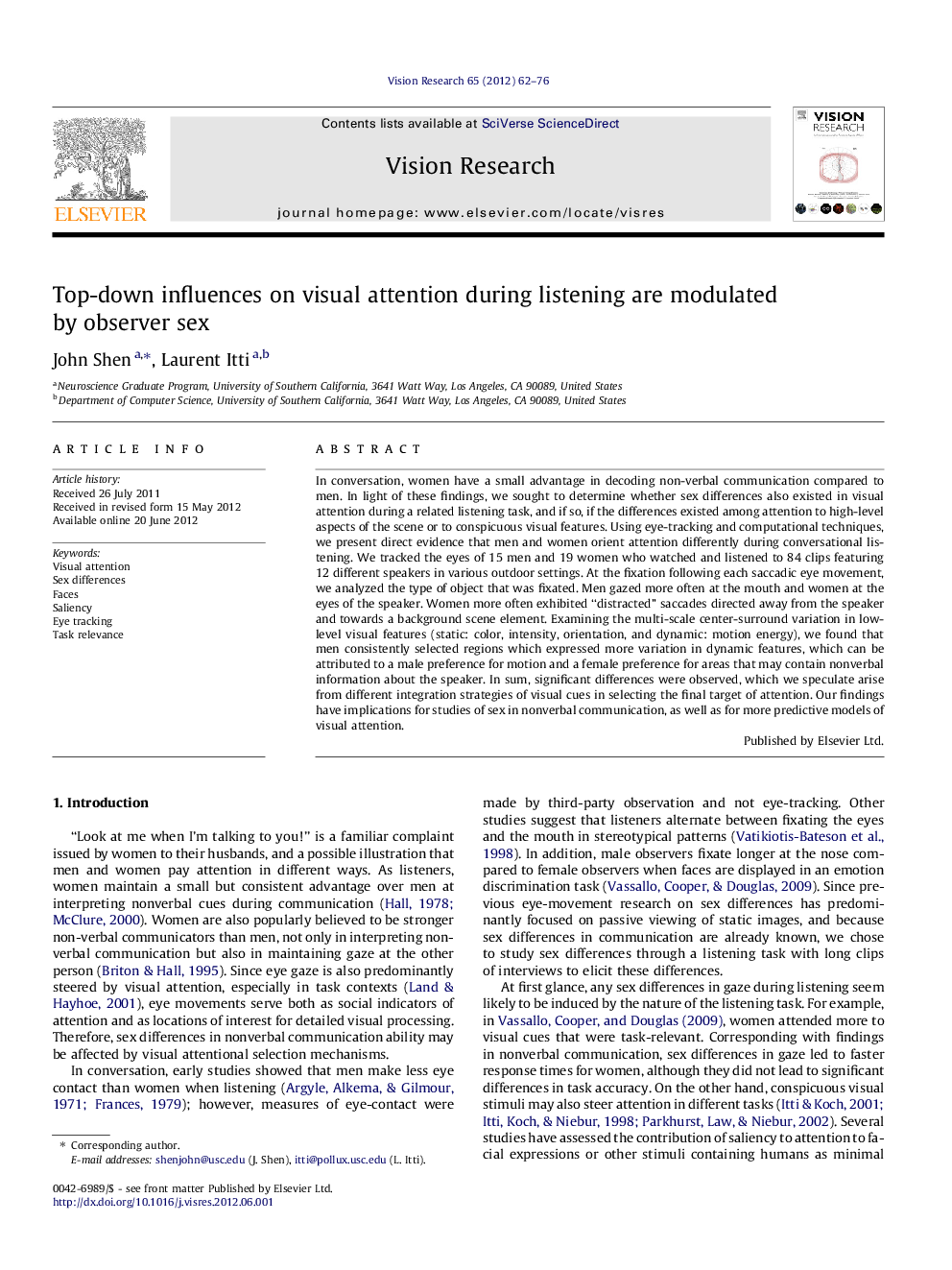| Article ID | Journal | Published Year | Pages | File Type |
|---|---|---|---|---|
| 4033940 | Vision Research | 2012 | 15 Pages |
In conversation, women have a small advantage in decoding non-verbal communication compared to men. In light of these findings, we sought to determine whether sex differences also existed in visual attention during a related listening task, and if so, if the differences existed among attention to high-level aspects of the scene or to conspicuous visual features. Using eye-tracking and computational techniques, we present direct evidence that men and women orient attention differently during conversational listening. We tracked the eyes of 15 men and 19 women who watched and listened to 84 clips featuring 12 different speakers in various outdoor settings. At the fixation following each saccadic eye movement, we analyzed the type of object that was fixated. Men gazed more often at the mouth and women at the eyes of the speaker. Women more often exhibited “distracted” saccades directed away from the speaker and towards a background scene element. Examining the multi-scale center-surround variation in low-level visual features (static: color, intensity, orientation, and dynamic: motion energy), we found that men consistently selected regions which expressed more variation in dynamic features, which can be attributed to a male preference for motion and a female preference for areas that may contain nonverbal information about the speaker. In sum, significant differences were observed, which we speculate arise from different integration strategies of visual cues in selecting the final target of attention. Our findings have implications for studies of sex in nonverbal communication, as well as for more predictive models of visual attention.
► We analyze sex differences in eye movements during listening to study communication and attention. ► Men look more often at the mouth of the speaker, and women look more at the eyes. ► Women show more attention to non-verbal communication cues. ► Men look at scene regions which display motion energy more often than women. ► Task-based eye movement models will require integrating feature-based information.
